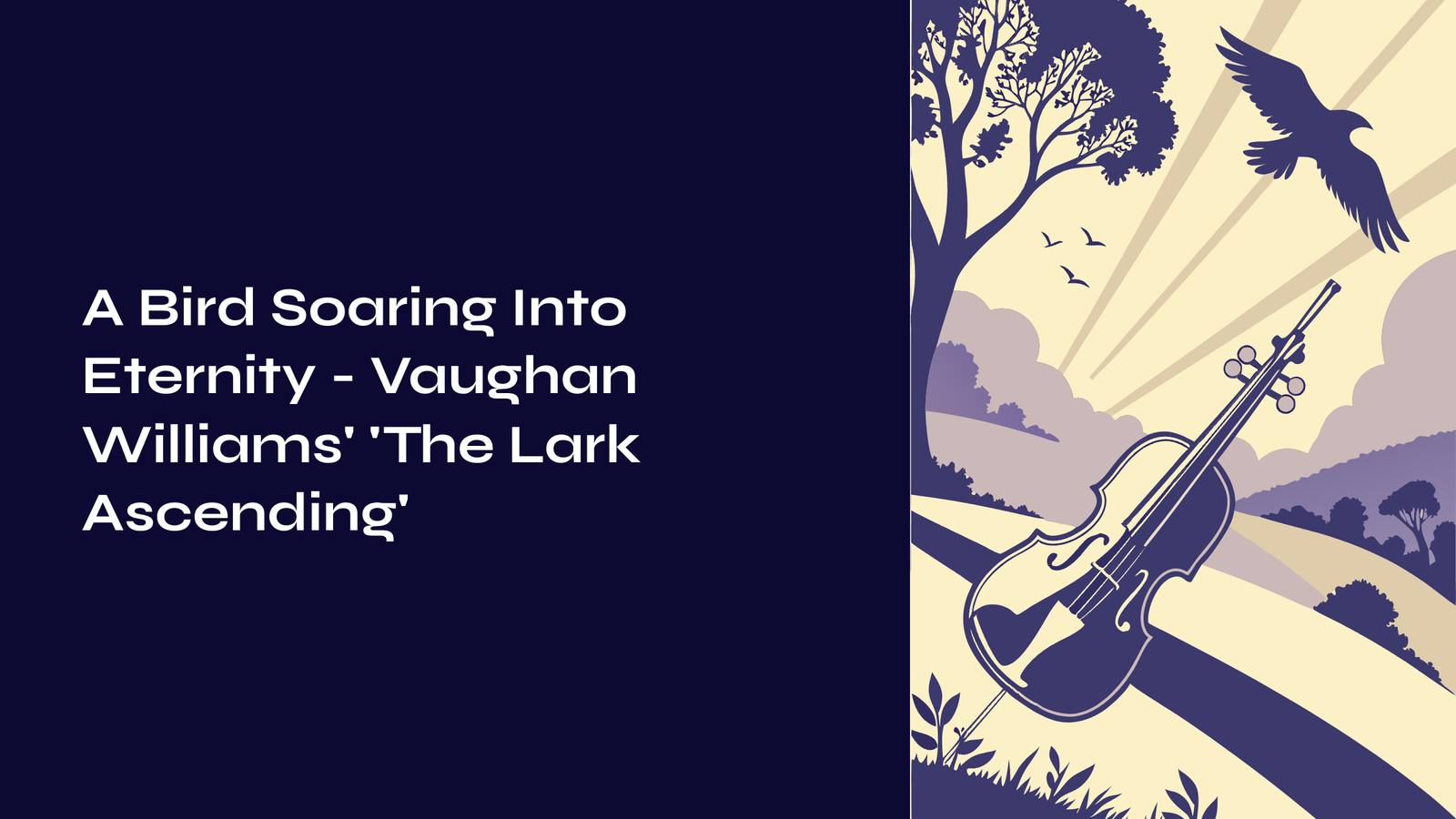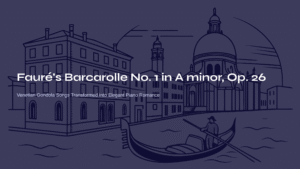Table of Contents
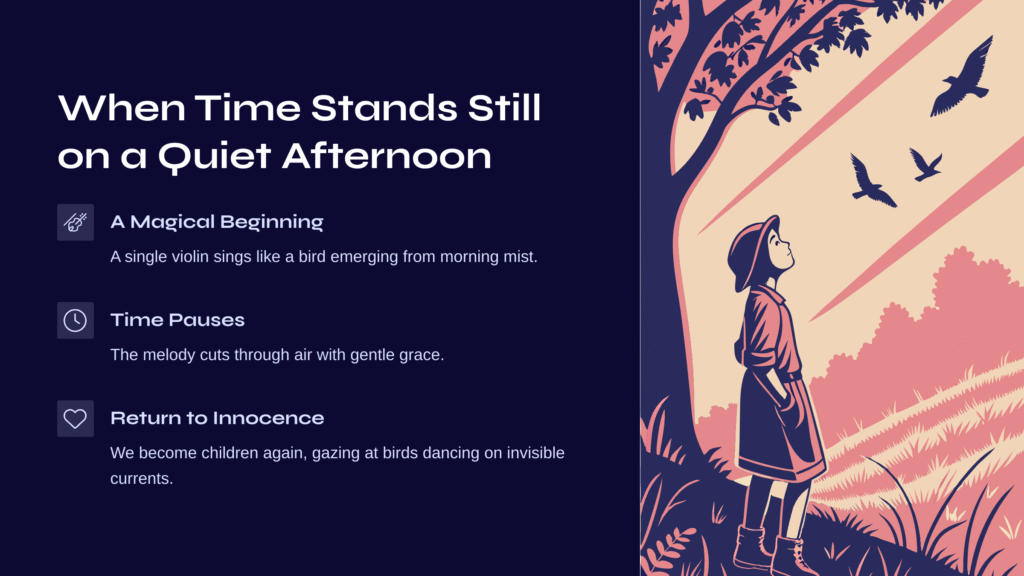
When Time Stands Still on a Quiet Afternoon
A single violin begins to sing. In that moment, time seems to pause. Like a bird slowly emerging from morning mist, the melody quietly cuts through the air, rising with gentle grace. This is the first magical moment that Ralph Vaughan Williams’ ‘The Lark Ascending’ offers us.
Some music transports us to another world from the very first note. ‘The Lark Ascending’ is precisely such a piece. It liberates us from urban noise and the weight of daily life, offering the freedom of soaring above England’s green meadows. Before this music, we all become children again—returning to that pure heart that once gazed up at the sky, watching birds dance on invisible currents of air.
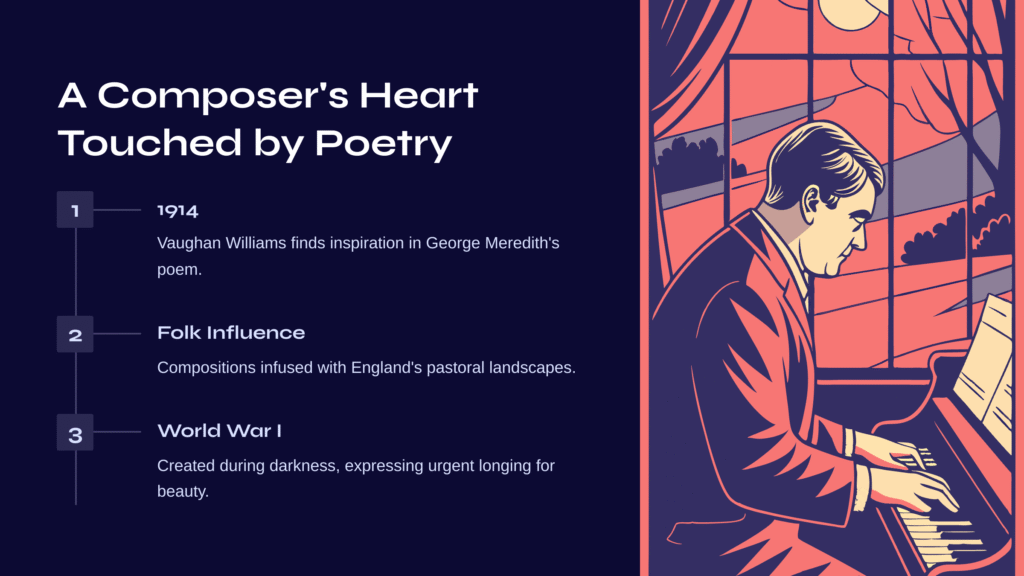
A Composer’s Heart Touched by Poetry
In 1914, English composer Ralph Vaughan Williams found deep inspiration in George Meredith’s poem ‘The Lark Ascending.’ He didn’t simply want to set poetry to music; he wanted to become the lark itself. Through a single violin, he sought to capture the bird’s song, its flight, and the world as seen through its eyes.
Vaughan Williams was a composer deeply devoted to English folk music and traditional melodies. His compositions are infused with the pastoral landscapes of England. ‘The Lark Ascending’ exemplifies this quality. Originally composed for violin and piano, the work was later orchestrated, revealing an even richer tapestry of sound.
What makes this even more poignant is that the piece was written during World War I. Even amid the darkness of war, the composer continued to paint musical portraits of natural beauty and peaceful moments. Perhaps this is why the music carries such urgent longing and desperate hunger for beauty.
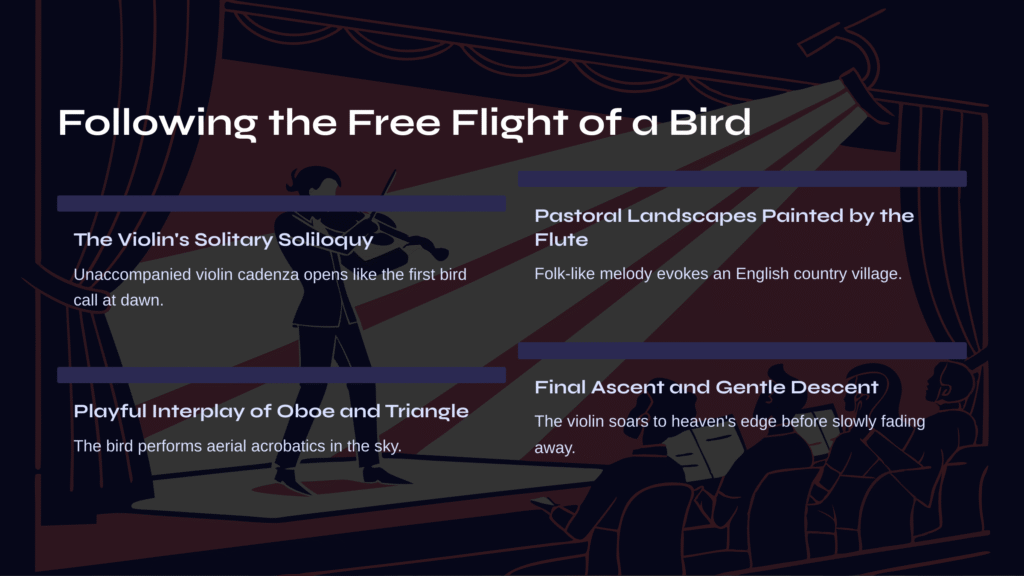
Following the Free Flight of a Bird
‘The Lark Ascending’ doesn’t follow traditional movement structures. Like a bird freely navigating the sky, the music flows in unrestricted form.
The Violin’s Solitary Soliloquy
The music opens with an unaccompanied violin cadenza. Without any accompaniment, only the violin begins its quiet song. This moment of silence is truly extraordinary. Like the first bird call at dawn, when the world still sleeps, we hear the lark singing alone.
In this introduction, the violin unfolds its melody without temporal constraints, completely free. Each note seems to float in mid-air, and even the spaces between them become part of the music.
Pastoral Landscapes Painted by the Flute
After the violin’s soliloquy, the flute introduces a beautiful folk-like melody. This section evokes the feeling of walking through an English country village. A peaceful afternoon, wind sounds across meadows, distant shepherd songs—all these elements seem woven into the musical fabric.
Here, the violin dances freely above the flute’s melody. Sometimes joining in song, sometimes executing trills in the upper register, mimicking bird chatter.
Playful Interplay of Oboe and Triangle
In this middle section, the oboe presents a beautiful melody while the triangle creates an intriguing rhythmic pattern by playing off the beat. This is my personal favorite passage. It’s as if the bird, with a mischievous expression, performs aerial acrobatics in the sky.
The violin continues to move freely through different registers, sometimes resonating low, sometimes creating sparkling sounds in the upper ranges.
Final Ascent and Gentle Descent
In the music’s final section, the violin stands alone once more. This time, it soars even higher, even more freely than before. Like a lark climbing to the very edge of heaven, the violin ascends to its highest register.
Then, slowly—very slowly—it descends. Until the last note fades away, we continue to watch the bird in that lingering resonance.
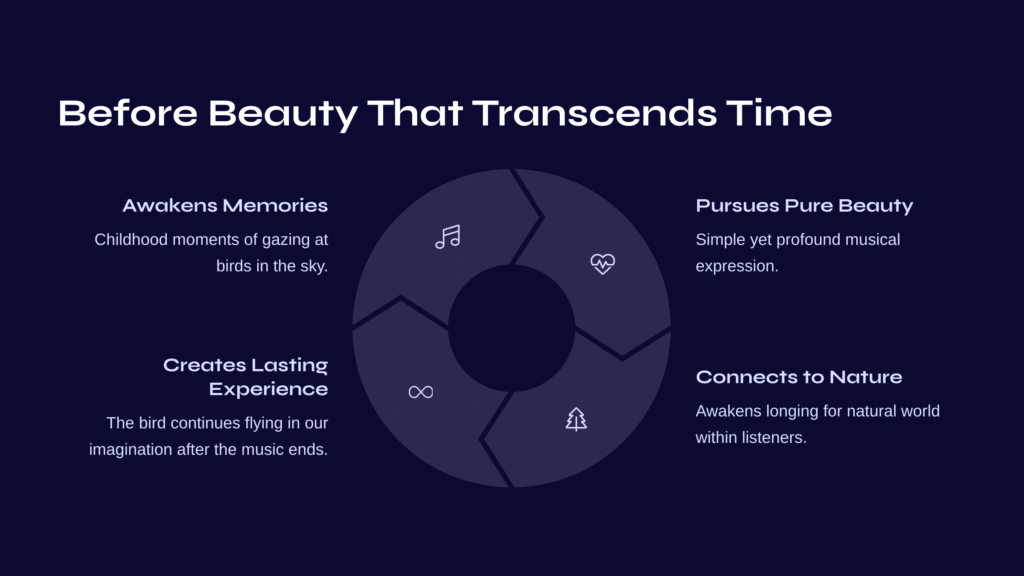
Before Beauty That Transcends Time
Every time I hear this music, childhood memories surface. The sky I gazed at from my grandmother’s yard, the birds that flew freely above it. I didn’t understand then how precious those moments were; only now do I comprehend their value.
‘The Lark Ascending’ captures exactly such moments in musical form. Rather than complex theories or difficult structures, it pursues pure beauty itself. It possesses a magical power to awaken the longing for nature and thirst for freedom that sleeps deep within every listener’s heart.
When the music ends, silence flows for a moment. In that silence, we continue to imagine the bird still flying above. And in that instant, the music becomes not merely sound, but an experience, a memory that remains within us.
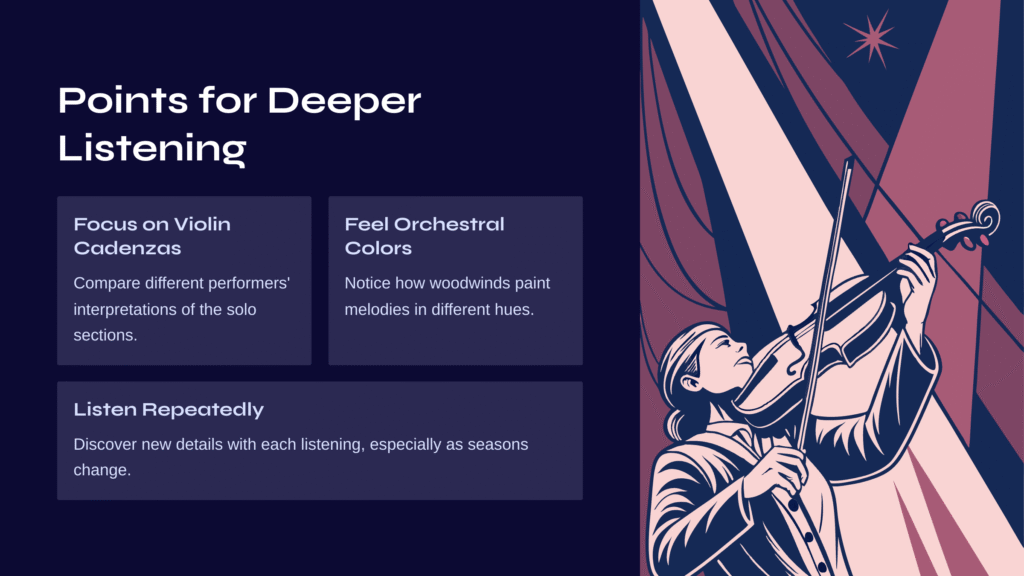
Points for Deeper Listening
First – Focus on the violin’s free cadenzas
The most striking parts of this work are the sections where the violin performs alone. Particularly the opening and closing cadenzas can give completely different impressions depending on the performer’s interpretation. Some violinists play more lyrically, others more freely. Comparing different performers’ versions makes for truly fascinating listening.
Second – Feel the colors created by the orchestral woodwinds
Flute, oboe, clarinet… imagine how each instrument paints melodies in different colors. Like creating a watercolor painting, each instrument has its own hue. The violin flies freely above, completing the overall picture.
Third – Listen repeatedly
This work isn’t meant to be heard just once and forgotten. With each listening, new details emerge and new emotions are felt. Try listening especially as seasons change—you’ll receive completely different impressions from the same music.
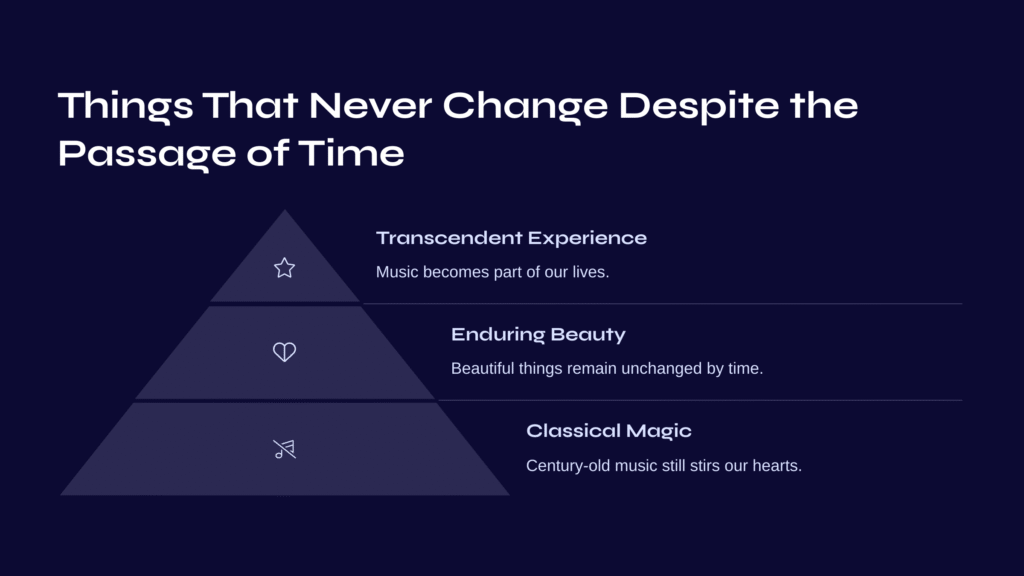
Things That Never Change Despite the Passage of Time
When the music ends, we feel as if we’ve become slightly better people. ‘The Lark Ascending’ is that kind of music. In our complex world, it makes us pause and consider what truly matters.
Perhaps the message Vaughan Williams wanted to convey through this music is simple: beautiful things don’t change with time, and that beauty is always beside us when we open our hearts and listen carefully.
That a single bird’s song can provide such profound emotion, and that music over a century old can still stir our hearts—isn’t this the very magic of classical music?
As you watch the lark ascending into the sky, feel yourself soaring alongside it. In that moment, music transcends mere sound and becomes part of our lives.
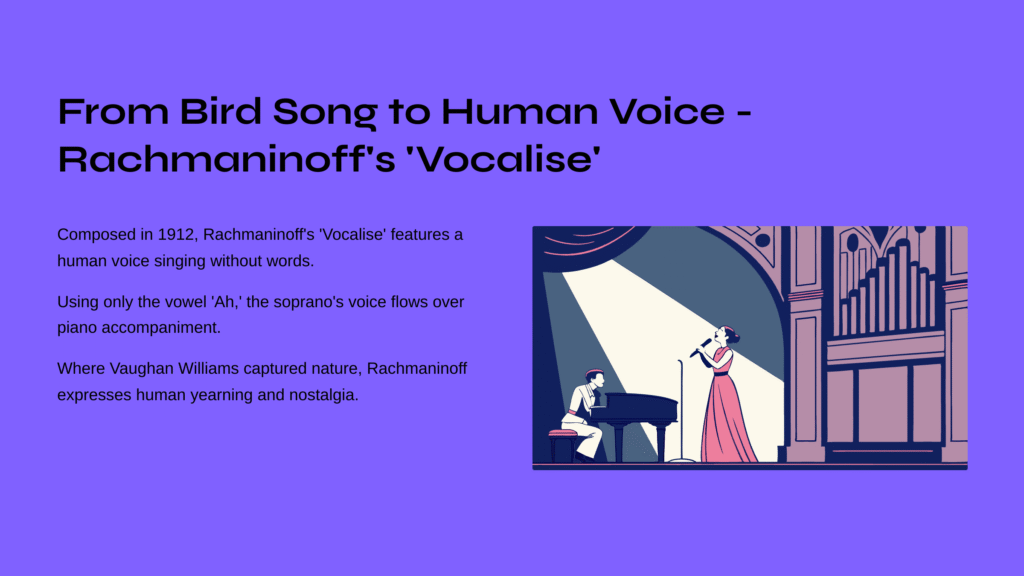
From Bird Song to Human Voice – Rachmaninoff’s ‘Vocalise’
While the violin in ‘The Lark Ascending’ spoke for the bird’s song, in Sergei Rachmaninoff’s ‘Vocalise,’ the human voice itself becomes an instrument. Composed in 1912, this unique vocal work is sung entirely without words, using only the vowel ‘Ah.’
When the soprano’s voice flows over piano accompaniment, we’re drawn into a world of pure emotion beyond language. Where Vaughan Williams captured nature’s beauty, Rachmaninoff expresses the deep yearning and nostalgia within the human soul through voice.
Both works move our hearts through the power of melody alone. Without complex lyrics or stories, they convey profound emotion through pure musical line. If ‘The Lark Ascending’ brought you nature’s peace, I recommend experiencing the beautiful yet poignant resonance of the human soul through ‘Vocalise.’
